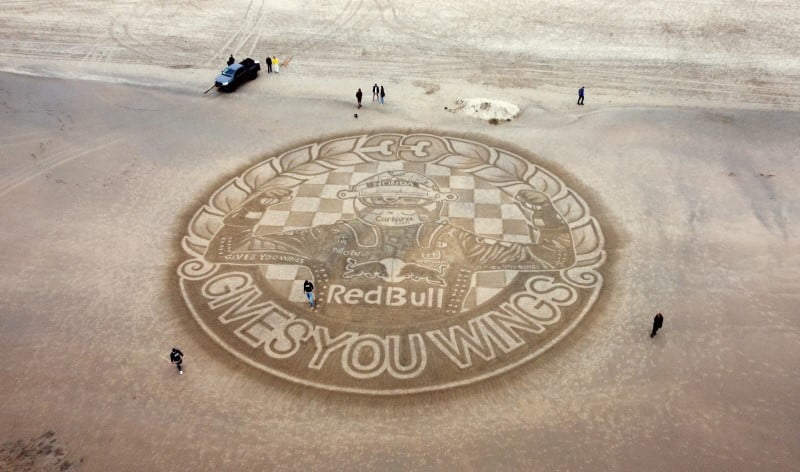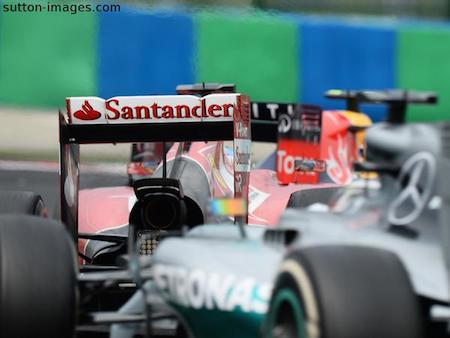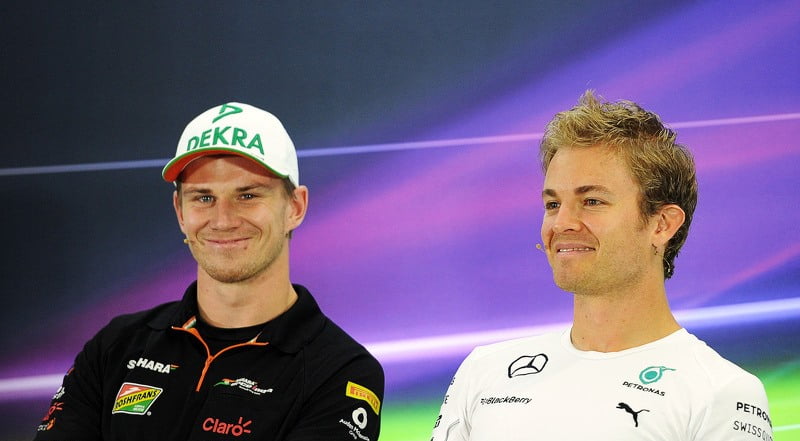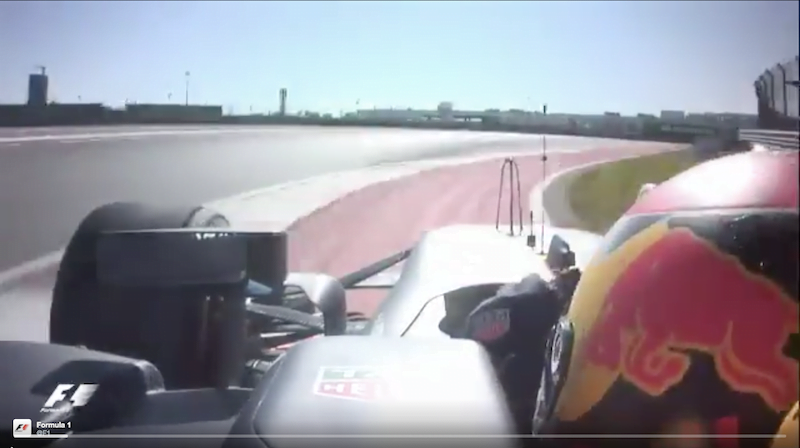‘Know Your F1 Circuit’ is a new series launched on my F1 blog. The posts under this series will be penned by Saumil Patel, an avid fan of the sport. You can follow the full series throughout the season by using the ‘Know Your F1 Circuit’ tag. This week’s post focuses on ‘Circuit Zandvoort’, the venue that will host Max Verstappen’s home race, the 2021 Dutch Grand Prix.
Circuit Zandvoort is uniquely located amidst the dunes of the North Sea coast, close to famous beach resorts north of Zandvoort in the Netherlands. For the more matured Formula 1 fans, Zandvoort’s return to the calendar would most certainly strike a chord and memories of fabled races in this very scenic location will come alive.
Before we dive into the circuit’s illustrious F1 history and stats, here are some cool ‘did you know’ facts.
Did You Know? F1 History & Stats: Zandvoort, Dutch GP
- The first Dutch Grand Prix at Circuit Zandvoort (called Zandvoort Grand Prix in 1948) was won by Prince Bira of Siam (member of the Thai royal family)
- Jo Bonnier recorded the only win, podium and pole position of his F1 career at the 1959 Dutch Grand Prix
- Carel Godin de Beaufort and Gijs van Lennep are the only Dutch drivers to have scored a point in their home race, after finishing sixth in 1962 and 1973
- Jim Clark made his Formula 1 debut in 1962 (Lotus 25) and went on to score a hat-trick of wins at Zandvoort (1963, 1964 & 1965)
- Jim Clark has led the most laps at Zandvoort – 370 laps. Alberto Ascari and Niki Lauda are a distant second with 180 laps – 200 less than Clark
- Graham Hill took the first podium finish of his career at the 1960 Dutch Grand Prix
- James Hunt scored his maiden Grand Prix win here in 1975
- The circuit has hosted thirty Formula 1 races, its eleventh on the most Formula 1 race hosted list
- During its thirty Formula 1 races so far, 49 different drivers have finished on the podium
- David Purley was awarded the George Medal for bravery after attempting to save Williamson from his burning wreck during the 1973 race
- Niki Lauda won the last Dutch Grand Prix here in 1985 starting from P10
- The banking on the final Arie Luyendykbocht corner at Zandvoort is set to be twice as steep as the banking at the Indianapolis Motor Speedway
A bit of last-minute prep for @LewisHamilton before it got dark last night ?
Pretty nifty way to check out the banking at Zandvoort, right? ?#DutchGP ?? #F1 pic.twitter.com/n642XrbwGi
— Formula 1 (@F1) September 3, 2021
F1 History & Stats: Zandvoort & Dutch GP, History
As in many countries in Europe, motorcar racing was finding its feet in the Netherlands too during the 1930’s and street races were held up until the breakout of World War II. It was after World War II in 1946 that Bentley Boy Sammy Davis, the winner of the 1927 Le Mans 24 hours was commissioned to design a permanent track utilizing the already existing roads constructed under the German occupation. The long straight down, the dunes and the coastal defence position roads were widened and linked to form the circuit.
The first race on the circuit, the Zandvoort Grand Prix (Grote Prijs van Zandvoort) took place on 7th August 1948 and continued for the next three years.
It was in 1952 that the Dutch Grand Prix was part of the third Formula One World Championship with Formula Two regulations instead of Formula One regulations as was the case for all European editions during that period. Both the 1952 and 1953 races were won by Alberto Ascari.
The first actual (by standards and regulations) Formula One race took place on June 19, 1955. The hundred lap race was won by legendary “El Maestro” Juan Manuel Fangio by four tenths of a second starting from pole position and driving a Mercedes.
Due to lack of finances the 1956 and 1957 races did not take place, but from 1958 through 1985 the circuit was part of the Formula One calendar with the exception of 1972 when drivers refused to race at Zandvoort finding the circuit facilities and conditions were obsolete and unsuitable for Formula One racing.
Faced with the prospects of losing its place on the Formula One calendar extensive redevelopment was undertaken immediately to modernize and upgrade the circuit. New pits were constructed, the circuit was lined with armco safety barriers to protect the cars and drivers from track side obstacles and sand dunes and a chicane was placed before Bosuit (the high-speed corner that goes into the pit straight) to reduce the speed and make it safer.
The 1973 Grand Prix race was flagged off amidst pomp and festivities to mark the successful rejuvenation of the circuit. Unfortunately, the race went down in the annals of history as one of the worst organised Grand Prix.
Roger Williamson participating in his second Formula One race suffered a tyre failure and crashed into the barriers near Tunnel Oost. The high-speed impact hurled his car across the asphalt for 275 meters before it ground to a halt upside down. The metal friction ignited the fuel tank which burst into flames, an uninjured Williamson was trapped under his turtled car.
Fellow British racing driver David Purley seeing the predicament valiantly tried to turn the car upright but realized it was not a one-man job. He appealed to the onsite safety marshals help, shockingly the safety marshals declined to assist as they were not wearing flame retardant overalls and had no self-protection to counter the intense heat.
Sadly, Williamson died due to asphyxiation with the race continuing at full clip. The communication failure between the race control, officials and marshals was total and absolute. Race control was under the impression that it was Purley’s car that caught fire and he was trying to extinguish the fire. They never realised it was Williamson’s car and that he was trapped underneath it.
Thankfully the spectre of 1973 gave way to mostly some brilliant racing and memorable moments between 1974 and 1985. In 1975, James Hunt won his first championship Formula One race driving a Hesketh and followed it up with another win the very next year (two on the trot).
In 1978, Gilles Villeneuve damaged his left rear suspension during his spirited battle with Alan Jones, not one to give up easily kept going on, shredding his left rear tyre and damaging his rim. Displaying exceptional car control, he manoeuvred his undrivable car on three wheels back into the pit without any further incident to retire from the race.
In 1981, spectators were treated to an epic encounter between Alain Prost in a Renault and Alan Jones in a Williams, Prost won the race. 1985 saw Nikki Lauda take his 25th and final Grand Prix victory, keeping his teammate Alain Prost at bay, an absolutely close race. That was the last race as (CENAV) the company that ran the circuit went out of business.
End of #F1’s “Iceman” era. Kimi Raikkonen announces his retirement. The 2021 Abu Dhabi GP will be the last of his career.
F1 will find a replacement for his talent but his personality might go unmatched forever!
Damn you COVID-19 for making me miss my last RAI media session!
— Kunal Shah (@kunalashah) September 1, 2021
In 2019, Zandvoort was awarded a three-year contract and would once again feature on the Formula 1 calendar, 2020 onwards. To ensure that the circuit would meet all the requirements and standards of Formula One, plans were executed to address two crucial issues, track safety and lap flow improvement.
Track safety was enhanced by adding SAFER (Steel and Foam Energy Reduction) barriers, widening the exit of Gerlachtbocht and inside of Hugenholtzbotch and relocating the start / finish line closer to Tarzan corner ensuring its visibility from the main grandstand. Track flow was improved by widening and reducing the second part of the chicane at Hansernstbocht and the Arie Luyendijkbotcht was widened and banked permitting higher speeds.
F1 History & Stats: Zandvoort, The Circuit
This old school circuit snakes through sand dunes with undulation giving it a rollercoaster like feel. It’s on the faster side with one flat-out straight and thirteen corners with shades of Silverstone, Spa and maybe even Suzuka. What sets this circuit apart is the 19-degree banking of Hugenholtzbocht and 18-degree banking of Luyendijkbocht corners which will test unchartered territories for tyre management and car set-up. Fewer overtaking opportunities due to narrow track width and lack of runoffs may result in Safety Car incidents hence a well thought out pit strategy will be important.
- Circuit Certification: Grade 1
- Circuit Classification: Permanent Circuit
- Circuit Direction: Clockwise
- Lap length: 4.259 km
- Race laps: 72
- Race distance: 306.648 km
- Pole position: Right-hand side of the track
- Number of Corners: 14
- Track Width: 8 m to 12 m
- Elevation Deviation: 7.92 m
- Race Lap record: 1:16.538, Alain Prost (McLaren 1985)
- Maximum speed: 319.6kph
- DRS zones: 2 (between Turn 10 & 11 & pit straight)*
*Although it might be reduced to one
- The most successive wins for a driver: Jim Clark with four wins (1963, 1964, 1965 & 1967)
- The most successive constructor wins: Ferrari with eight wins (1952, 1953, 1961, 1971, 1974, 1977, 1982 & 1983)
F1 History & Stats: Zandvoort, Race Strategy
Given the new circuit, expected cornering loads, lesser track time in Free Practice and several other factors, the teams are entering into the unknown when it comes to car setup, tyre degradation and hence race strategy. It is no surprise that Pirelli is bringing their hardest compound to the 2021 Dutch Grand Prix.
Saumil Patel is an avid fan of Formula 1. He aims to take you deeper into the sport by uncovering the lesser read.














